Helianthus annuus
One of my favorite summer memories comes from the summer of 2012, when I spent six weeks studying Spanish in Spain with my sister. The school regularly took us on trips to popular and historically significant towns and regions in the country.
On one trip to Barcelona from Valencia, we drove past fields of sunflowers.
They were so alluring that the driver stopped the bus and let all the students hop out to take photos of the tall beauties. They filled our hearts with joy, as sunflowers do.
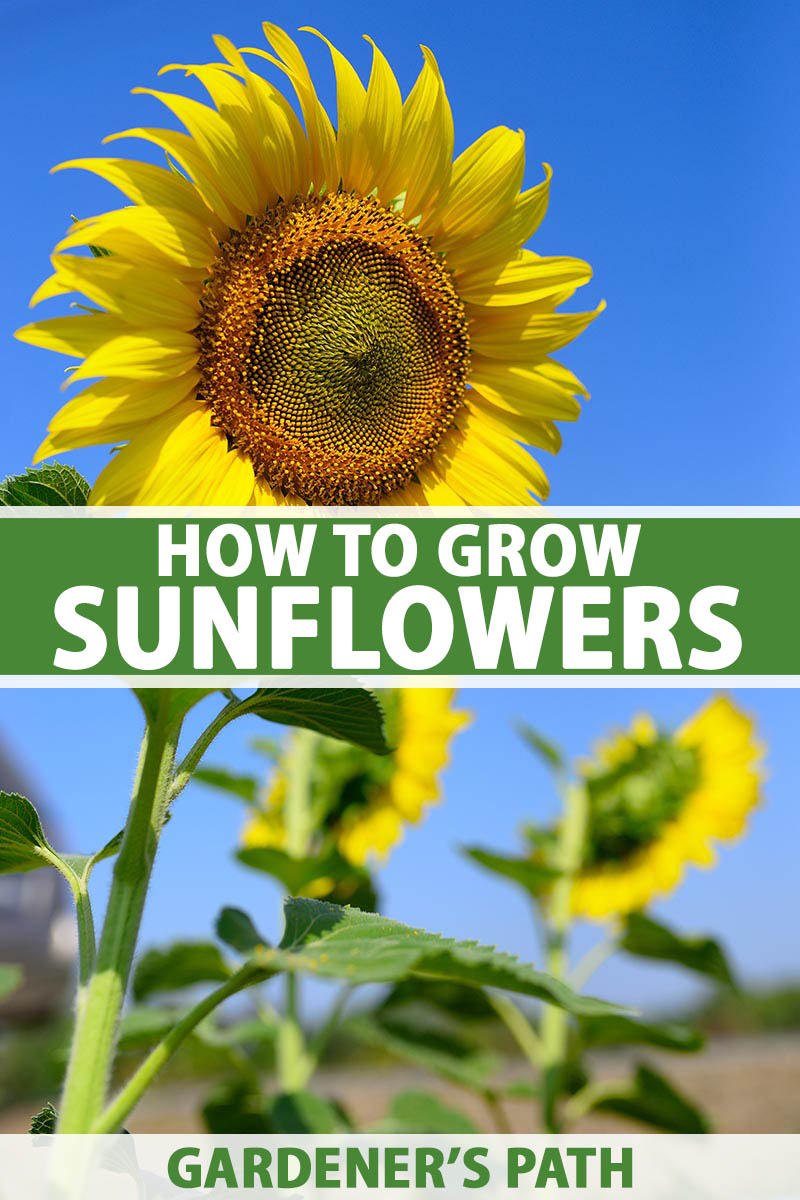
We link to vendors to help you find relevant products. If you buy from one of our links, we may earn a commission.
In Spanish, the word for sunflower is girasol, which translates to “a trip around the sun,” or mirasol, which translates to “looks at the sun.”
How lovely is that?
Even if you don’t have the option to travel to Spain right now – oh, how I’d love to go back! – you can grow beautiful sunflowers right in your own yard or garden.
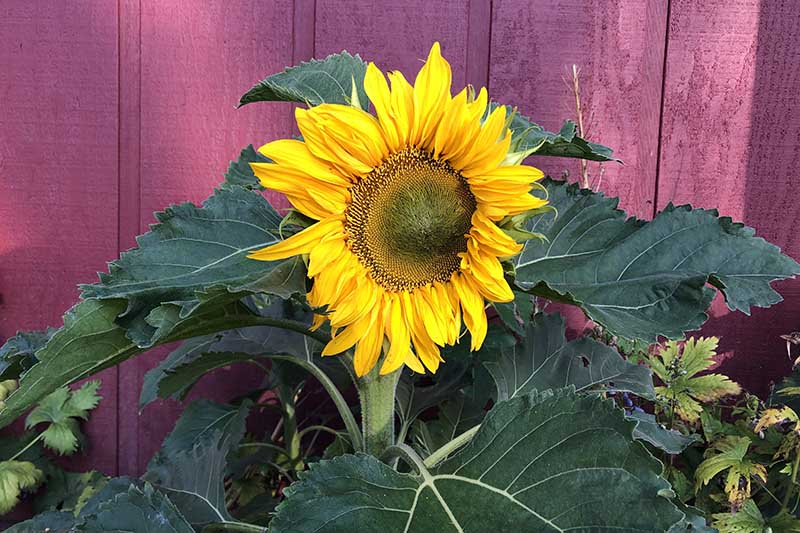
In this guide, we’ll tell you everything you need to know to grow your own joy-inducing Helianthus annuus flowers.
Here’s what’s ahead:
What You’ll Learn
Cultivation and History
Sunflowers are as delicious to eat as they are joyful to look at.
Lots of people love snacking on the seeds. Personally, I love sun butter as a substitute for peanut butter. And the oil from these giant beauties is used in cooking all over the world.
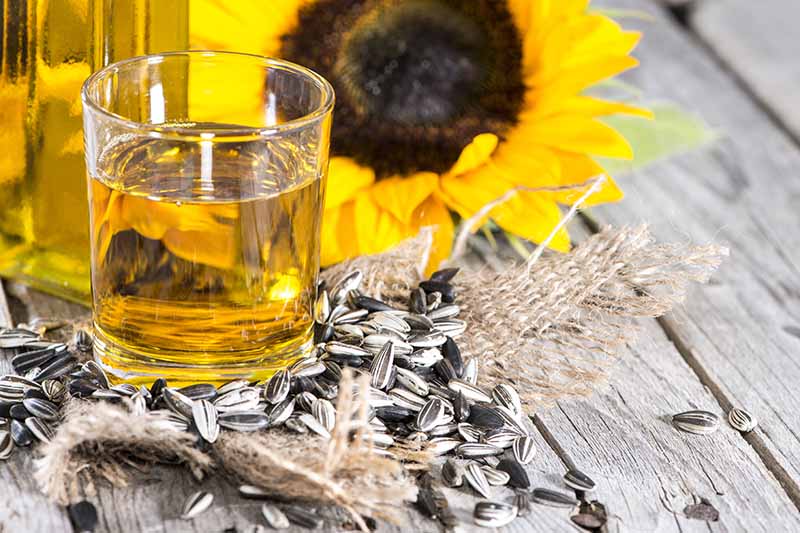
Plus, you’ll often find the seeds in birdseed mixes and suet cakes. The birds love them, too!
The versatile H. annuus is a member of the Asteraceae or daisy family, along with marigolds, asters, and the humble dandelion, to name a few.
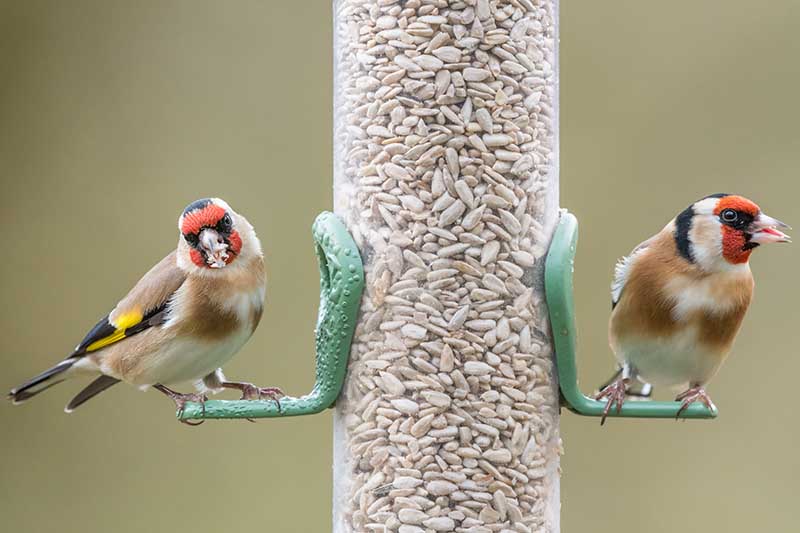
Like many other members of the daisy family, sunflowers are heliotropic, meaning the blossoms turn to follow the sun when they’re growing and developing.
But once a flower reaches maturity, it settles into a comfortable east-facing position and stays there until it dies.

Because of its many culinary uses, H. annuus is grown around the world as a food crop. Ukraine and Russia alone produce half the world’s supply, with Argentina, Turkey, France, Hungary, Spain, and China growing most of the remainder of what’s sold commercially.
Despite its global renown, the sunflower originated in North America and was a major food crop for many indigenous peoples. Today, it’s mainly grown on farms in North and South Dakota, Minnesota, California, Colorado, Kansas, Nebraska, and Texas.
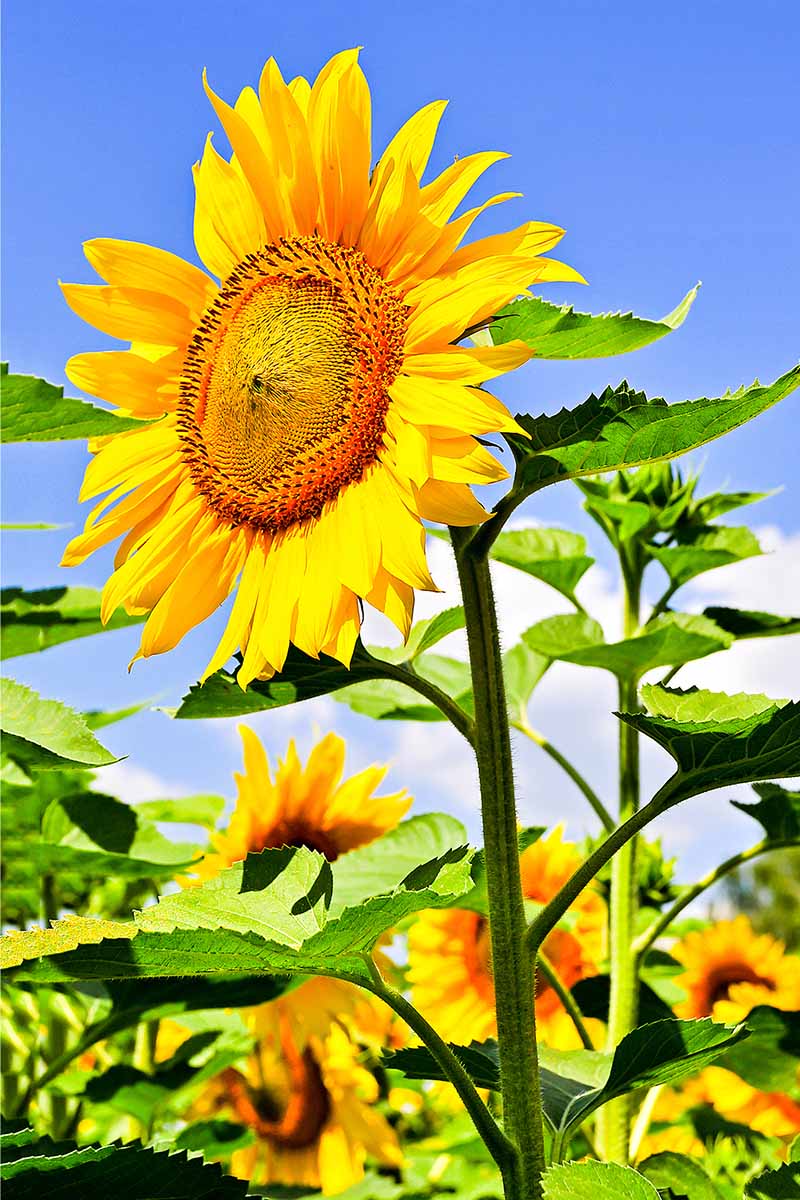
The flower made its way to the rest of Europe via explorers who brought seeds to Spain. From there, gardeners spread the flower throughout the rest of the continent and on to Russia.
Along with their cheerful beauty and long-standing culinary value, sunflowers are also known for their height.
While wild H. annuus is a branching flower that supports more than one bloom, single-stem, single-bloom cultivars are popular for their incredible height.
Some varieties are among the tallest flowers grown anywhere. At fall festival competitions, it’s not unusual to see these behemoths topping twenty feet.
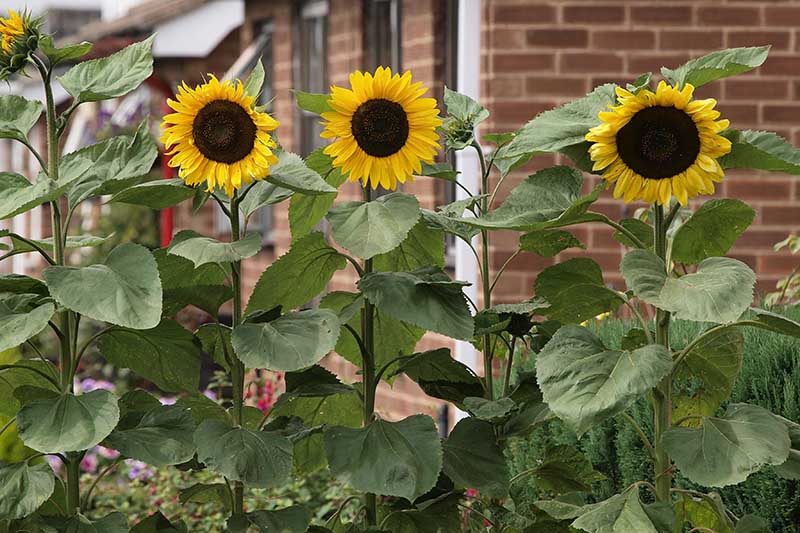
Midsize varieties grow six to ten feet high, and some people prefer these for their disproportionately large blossoms. The really big plants have smaller flowers, because their long stems cannot support anything heavier.
Smaller cultivars that grow to only two to three feet or less are popular as well, especially among gardeners who like to grow theirs in containers.
Ready to grow your own? Let’s get started!
Sunflower Plant Propagation
If you’re a beginning gardener or you want a fun gardening project for your kids to do, growing H. annuus is the way to go.
These flowers are super easy to grow, and they aren’t picky about their growing conditions. You can propagate them from seed or transplant seedlings from the store.
Growing from Seed
Like other plants with taproots, sunflowers grow best when sowed directly into the yard or garden. This gives them plenty of space and time to develop the taproots and send them down deep.
We’ll focus on that method first.
H. annuus flowers are annuals, so you can grow them just about anywhere, but they don’t like to get too cold.
They prefer USDA Hardiness Zones 2-11, and they definitely want you to wait to plant them outdoors until all danger of frost has passed.

Though these tough blooms will grow almost anywhere they’re planted, it’s best to select an area with at least six to eight hours of sunlight per day and rich, well-draining soil.
They should still do alright in less than ideal conditions, they just might not grow as big and strong!
Dig a shallow trench of about one inch deep and place the seeds inside. If you want small flower heads, plant the seeds two to four inches apart.
For larger heads, plant six to eight inches apart. This is true even for larger cultivars, although the smaller size will be relative: a smaller ‘Russian Mammoth’ flower, for example, won’t be as small as a smaller ‘Dwarf’ variety.
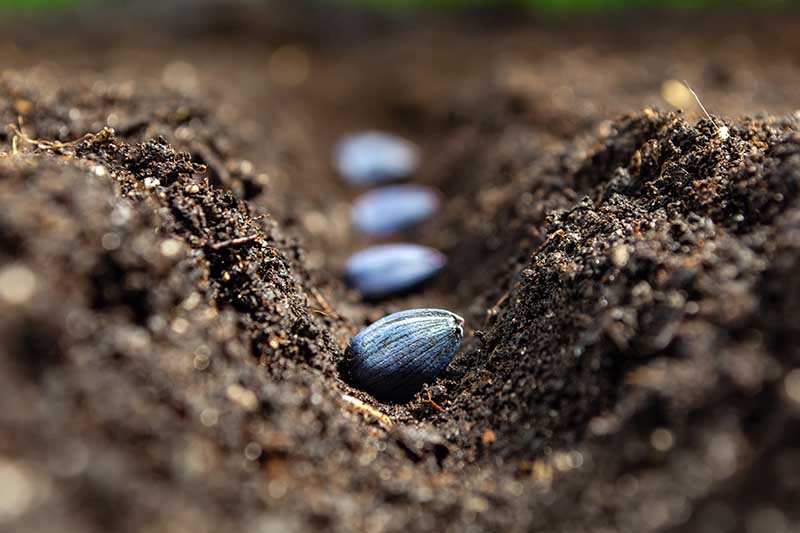
When I planted my seeds last year, I didn’t pay close enough attention to spacing. The result? Some heads were fully developed and had a nice size, while others – dwarfed by their sisters – stayed tiny.
Here’s what my bigger sunflowers looked like:

And my tiny ones, which still looked lovely in a vase indoors, looked like this:
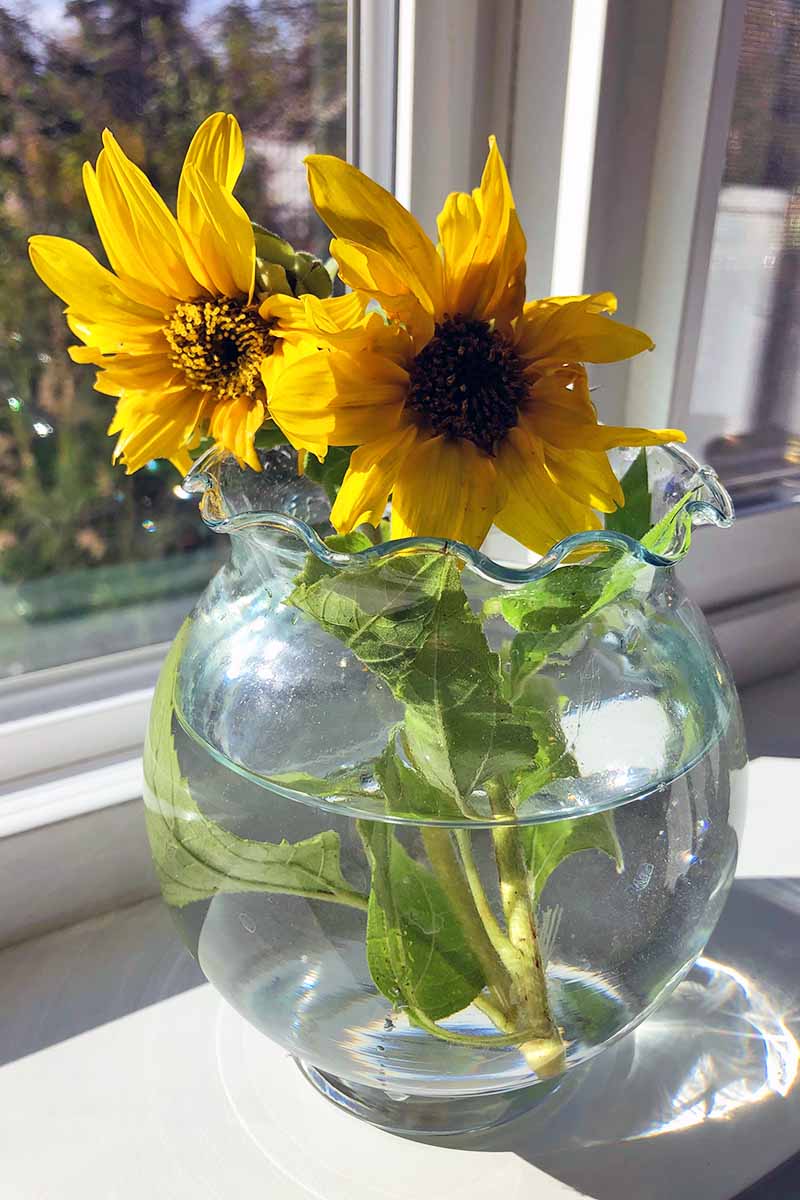
So keep this in mind while planting! Some plants will overshadow others, but the smaller ones will be ideal for bouquets.
Once you’ve set the seeds in the trench, cover them with an inch of soil and water thoroughly. Keep moist until germination, which should occur in 7-10 days.
As soon as the first set of true leaves emerges, thin any stray seedlings that are too close together – those that are growing more closely than two inches from their neighbors.
Also, did you know that sunflower sprouts are edible? So instead of tossing the extra seedlings in the trash, toss them into a salad.
That’s all there is to it! You’ll see flowers in anywhere from two to three months, depending on the variety.
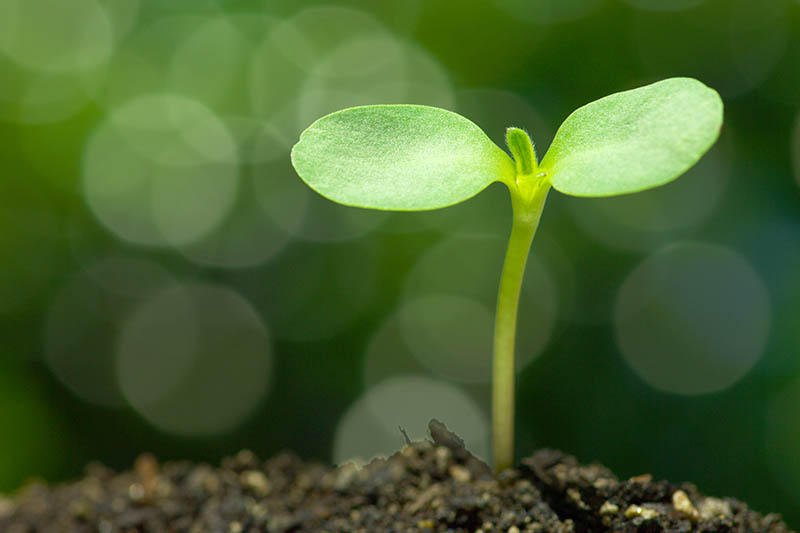
Now, if you really want to sow seeds indoors before the danger of frost passes, you can do it.
You’ll want to start just a few weeks before the last frost date so that the plants don’t get too big in the seed trays.
If they grow too large while the roots are still trapped in a small cell, they may not thrive once they’re moved outdoors.
Sow two seeds each, one inch deep, in starter trays or peat pots. Keep them moist.
Thin seedlings once they have a set of true leaves, keeping the strongest one in each pot or cell, and transplant them out after all danger of frost has passed, or when seedlings are about three to four inches tall.
Harden them off for about a week before planting out in the garden.
Transplanting Seedlings
If you find seedlings at the store or have grown your own in starter trays, here’s how to transplant them outdoors.
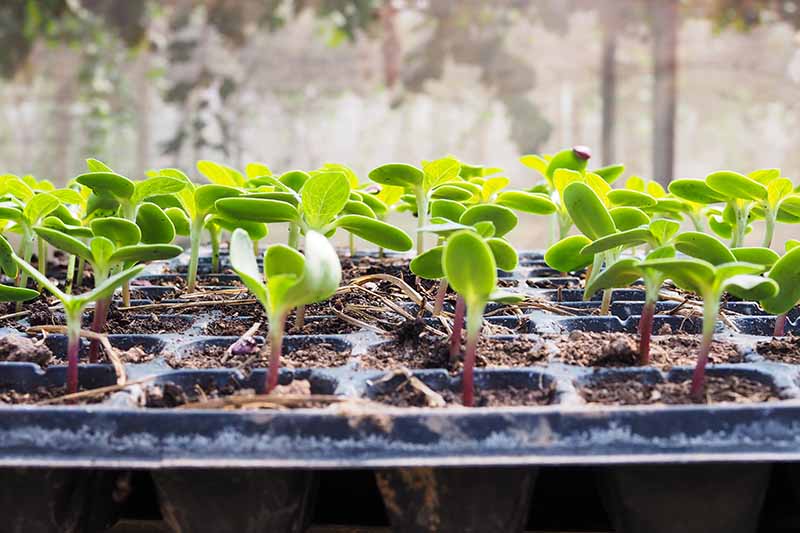
Find a location that gets at least six to eight hours of full sun every day and has rich, well-draining soil. Dig a hole the size of the root ball, carefully remove the plant from the starter tray, and place it into the hole. Tamp the soil back over it, and water in well.
Space each hole two to twelve inches apart, depending on your flower head size preference and the cultivar you have selected.
Check the seed packet to make sure, and keep in mind that branching varieties need more space than single-stemmed types.

If you started your seeds in biodegradable peat pots, place the entire pot directly into the soil.
Water thoroughly, and then voila! You’re done, transplanting accomplished.
How to Grow Sunflowers
Sunflowers can handle high temperatures, as they love warmth, but they hate freezing temperatures and don’t like frost.
Here’s a secret: they can handle a teeny tiny bit of frost, so if a surprise light frost hits later in the season than usual, they’ll probably be okay.
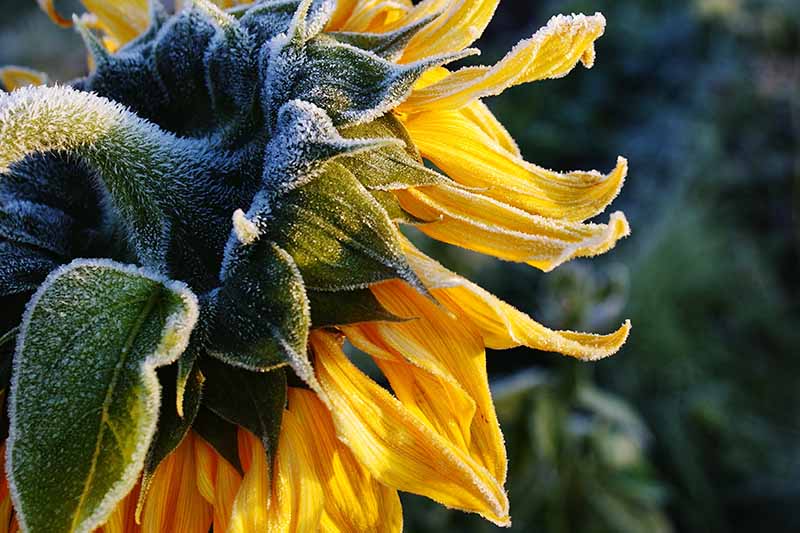
In fact, remember that photo of a big bloom from my flowerbed? It thrived even after the first fall frost hit Alaska. But don’t count on that!
To keep your blooms happy and strong for their summer growth, water them once or twice a week, depending on how much rain you get.
To check the soil for moisture, stick your finger one inch down. If you don’t feel anything wet, give your plants a good inch of water each.
If wind is a problem as the flowers grow taller, you can stake them. A good trick is to plant sunflowers close to a fence, which can be used for support.
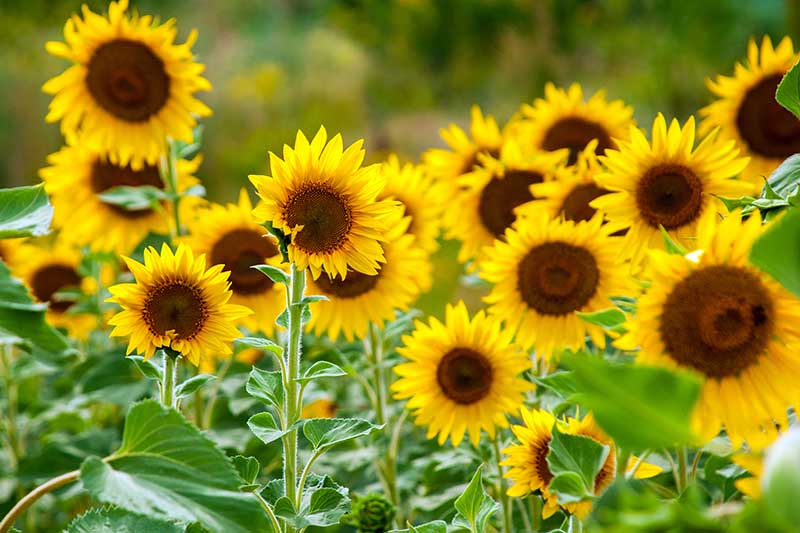
For branching varieties, pinch the tops when they have four to five sets of true leaves to encourage bushy growth and multiple flower heads.
But keep in mind that branching varieties will naturally branch out, so this isn’t strictly necessary to obtain more than one lovely flower.
Sunflowers don’t need a lot of fertilizer, but a little can help. Phosphorus and potassium can encourage bigger blooms, while nitrogen supports leaf growth.
Aim to find a balanced 5-5-5 (NPK) fertilizer, which you’ll only need to use once. Add it to the planting area according to package instructions when seedlings have several sets of true leaves. Don’t over do it, or your plants may produce tons of foliage and no blooms.
Growing Tips
- Plant after the last frost.
- Keep seeds moist until germination.
- Plant in an area with full sun (at least 6-8 hours of direct sunlight).
- Fertilize lightly with a balanced 5-5-5 NPK fertilizer.
- Occasionally your flowers may get a bit droopy, use our guide to troubleshoot this issue.
Sunflower Cultivars to Select
Here’s a nice, varied selection of sunflowers, both tall and small(ish), to grow in your home garden:
Mammoth Russian
Want an enormous bloom to enter into a state fair competition? Look no further than ‘Mammoth Russian,’ which grows up to 144 inches tall and boasts a huge, twelve-inch, sunny heads.
‘Mammoth Russian’ also produces excellent seeds for snacking, with thin, easy-to-crack shells and meaty kernels.
Flowers will bloom about two months after planting, with harvestable seeds available in another two to four weeks.
Find packets of 200 seeds at Burpee.
Wild Sunflower
For an excellent supply of summer-long bouquets, succession-plant these beauties in your garden for four or five weeks in the spring.
Blooming in just over two months from sowing, you’ll have a near-constant supply of three-foot-tall plants with delicately cheerful blooms to gaze at in the garden, or cut and enjoy in vases and arrangements.
You’ll find seeds in a variety of package sizes, from a small packet to a five-pound sack at Eden Brothers.
Velvet Queen
You didn’t think sunflowers only came in shades of yellow and orange, did you?
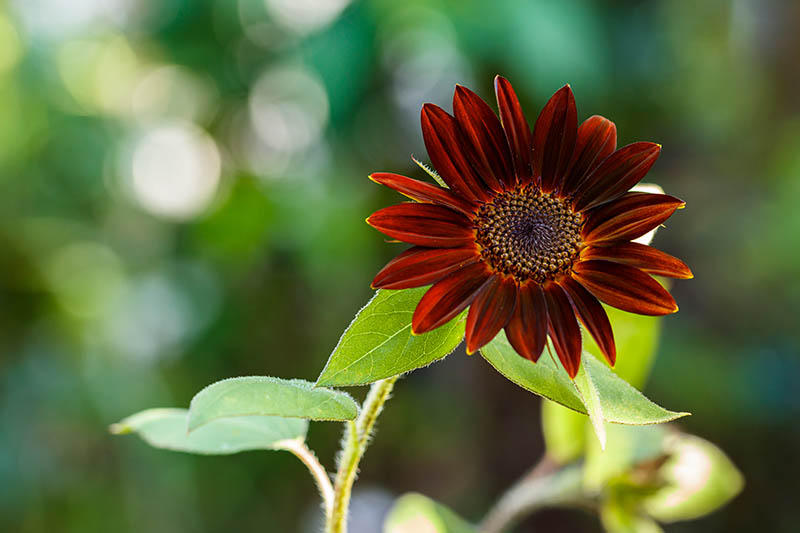
Okay, well, I did. Until I discovered this alluring cultivar, which boasts petals in a deep mahogany that reminds me of red velvet cake against a black-seeded center.
Try mixing these three-foot-tall plants with one of the yellow varieties for a captivating show in your garden.
Seeds are available from True Leaf Market in packets ranging from two grams to one pound.
Want More Options?
Be sure to check out out supplemental guide, “Here Comes the Sun: 15 Popular Sunflower Varieties,” to help you choose the best cultivar for your lawn and garden.
Managing Pests and Disease
There are a variety of maladies and creepy-crawlies to watch out for when you’re growing sunflowers.
Let’s take a look.
Omnivores
There are two main omnivore pests (or guests) that will happily eat your sunflowers, most notably once the seeds develop..
Read on to find out who they are!
Squirrels and Birds
These critters adore the seeds, with good reason. So do we, after all!
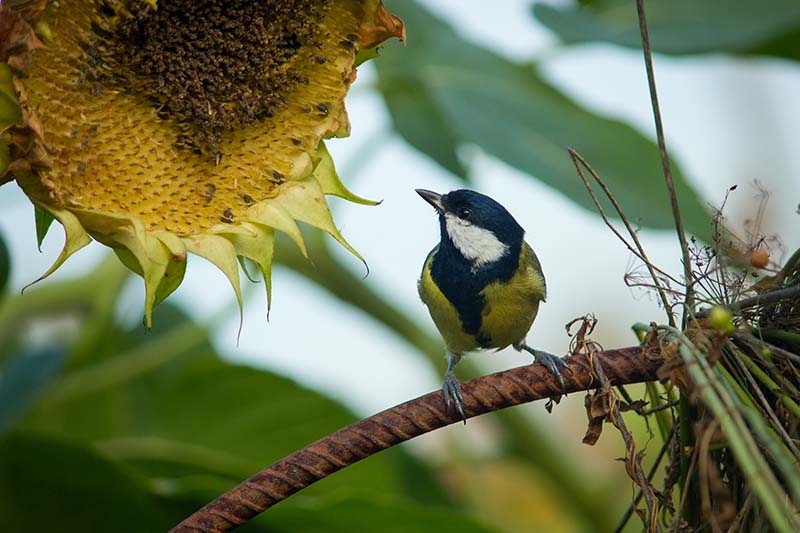
If you’re trying to save them for your own use, cover the heads with a piece of cheesecloth or screen after the seeds start to develop.
Read more here for tips and tricks on protecting your seeds from birds and squirrels.
Or do what many gardeners do: allow the bright blooms to act as a natural bird and squirrel feeder, and let the animals have their share.
Insects
Which bugs bother our cheerful blooms the most? Here are the top five sunflower foes.
Cutworms
Unfortunately for sunflowers, there are several cutworm species that prey on these sunshine-loving plants:
The dingy cutworm (Feltia jaculifera), named for its dingy brown color; the darksided cutworm (Euxoa messoria), which sports darkish stripes on its sides; the tan, sandy-colored sandhill cutworm (Euxoa detersa); and the dark gray black cutworm (Agrotis ipsilon).

Cutworms are moth larvae, and they eat the foliage, creating holes in young leaves, and making young plants wilt and sometimes die.
While they feed mostly at night, cutworms like to hang out during the day in the soil, or under weeds growing within a few feet of their chosen victim.
If you notice cutworm damage and find larvae nearby, it’s time to handpick as many as you can find and get rid of them.
You can also spread diatomaceous earth around the plant to kill the soft-bodied insects, or release beneficial nematodes, like these from Arbico Organics.
Read our complete guide to cutworm control to find more tips.
Grasshoppers
These common bugs don’t do tons of damage to sunflower plants, but they do like to chew on the foliage and sometimes the seeds.
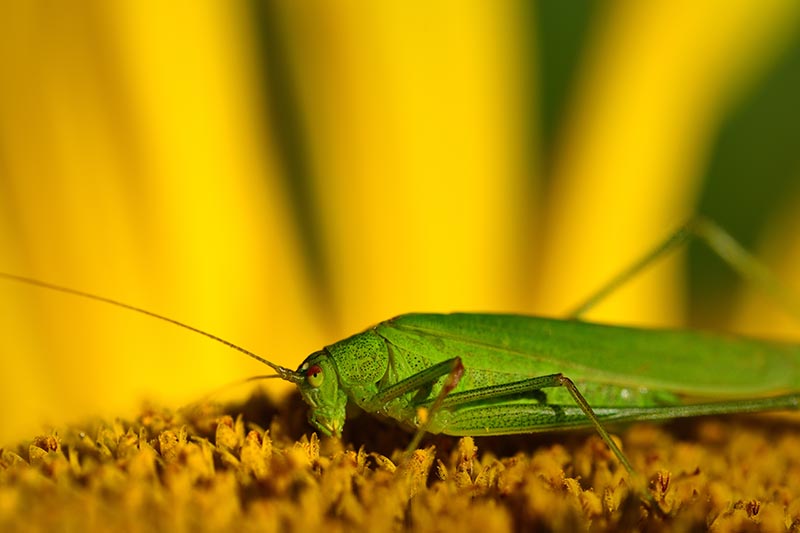
According to experts at the Department of Entomology at Kansas State University, they don’t tend to destroy entire plants. Commercial growers should plan to do something to deter grasshoppers if they notice more than eight per square yard.
Using a grasshopper deterrent that doesn’t harm other insects or the plant itself is ideal.
Nolo Bait from Arbico Organics
Try Nolo Bait, a coated bran flake that infects grasshoppers with Nocema locustae, a pathogen that only affects grasshoppers and crickets.
Nolo Bait is available from Arbico Organics.
To prevent an infestation, try planting squash, peas, or tomatoes in the same area as your sunflowers – grasshoppers tend to avoid these.
Sunflower Beetles
This 1/4- to 3/8-inch-long beetle (Zygogramma exclamationis) sports a reddish-brown head and a creamy, striped body.
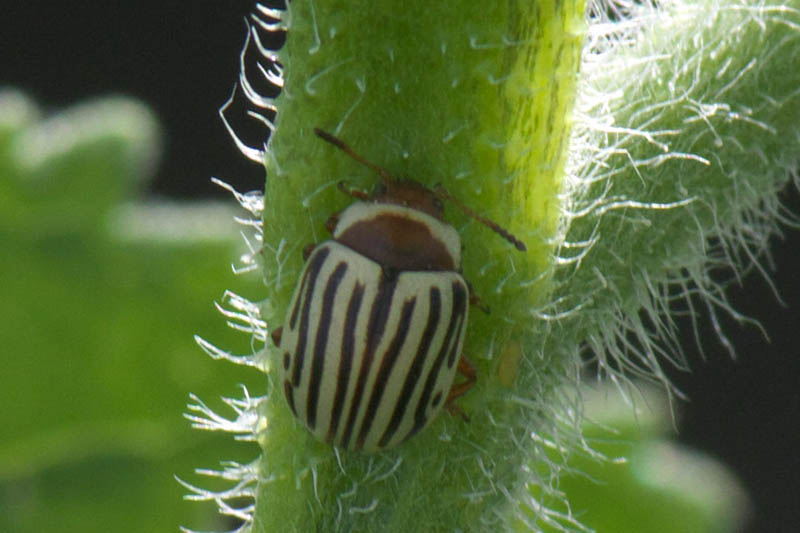
The fat, greenish larvae and the adults both like to eat through the foliage, often skeletonizing entire plants.
If you catch these insects early and repel them with insecticidal soap or neem oil, there’s a good chance your sunflower crop will survive and thrive.
Sunflower Bud Moths
This moth’s cream-colored 3/8- to 5/8-inch larvae (Suleima helianthana) do the damage here.
They like to bore into stems, and occasionally budding flowers. They tend to make themselves so at home within a plant that they leave lots of visible black frass, or excrement, behind.
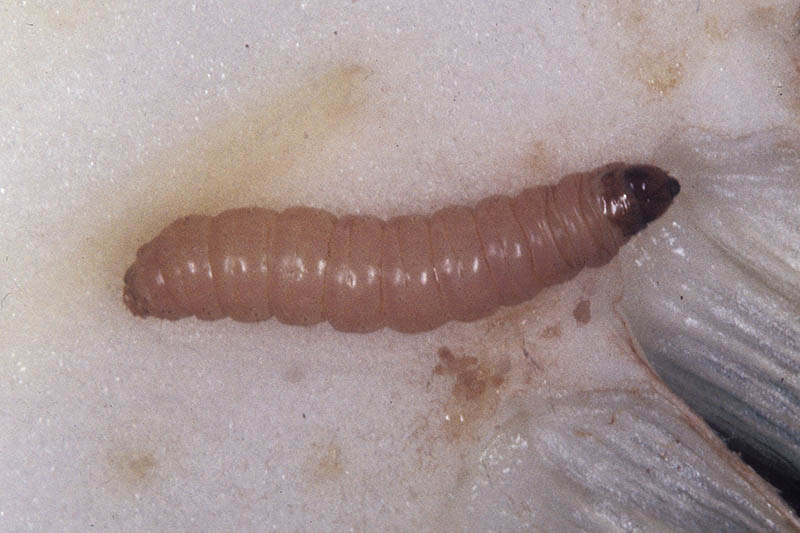
If any of your sunflower stems or buds have curled inward and they sport a strange black substance around the damaged area, you probably have bud moth larvae on your hands.
Thankfully, if the larvae stay inside the stems, your buds will probably open just fine. But if they decide to attack the unopened buds as well, those flowers will be ruined.
Bud moth infestations are usually small and insecticides aren’t helpful.
To reduce the chance of an infestation, keep the surrounding area free of weeds, which can be host plants for the moths and their larvae.
Sunflower Headclipping Weevils
Think of these small black weevils (Haplorhynchites aeneus) as little sunflower serial killers.
The female weevils chew through the stems of flowers just below the blooms, cutting most of the head off the plant.
But instead of finishing the decapitation, the females mate with male weevils inside the cuts they’ve made in the hanging flower heads, and then after the heads eventually fall to the ground, the eggs hatch.
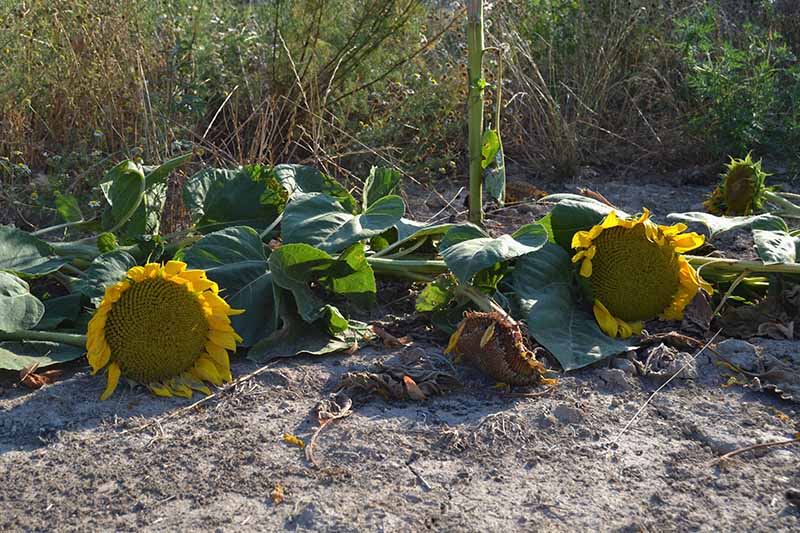
If these flower heads are left on the ground, the weevil larvae will feed on them, move into the soil to overwinter, and emerge as adults the following summer, ready to wreak more havoc in your flower patch.
The best thing to do if you notice decapitated flower heads is to burn or otherwise get rid of them.
To control existing infestations, spray the backs of the flower heads with insecticidal soap or a neem oil mixture.
Want to Know More?
Then check out our full guide to sunflower pest identification and control.
Disease
These diseases can cause some serious damage to your crop, so it’s best to check for signs of these common culprits as often as you can.
Alternaria Blight
Is your sunflower foliage suddenly speckled with yellow-ringed black spots? Or are the stems developing dark streaks and splotches, like an overripe banana?
Your plant may be suffering from Alternaria, a blight that affects leaves, stems, and sometimes flower heads. It is caused by the fungi Alternaria helianthi and A. zinniae.
To avoid infection, refrain from overhead watering and make sure there’s plenty of airflow between plants. If infected, spray with a fungicide, and remove and destroy the plant at the end of the growing season.
Phoma Black Stem and Phomopsis Stem Canker
If the stems begin turning black and the rest of the plant wilts too, your flower might be suffering from Phoma black stem or Phomopsis stem canker. These infections are caused by the fungi Phoma macdonaldii and Phomopsis helianthi, respectively.
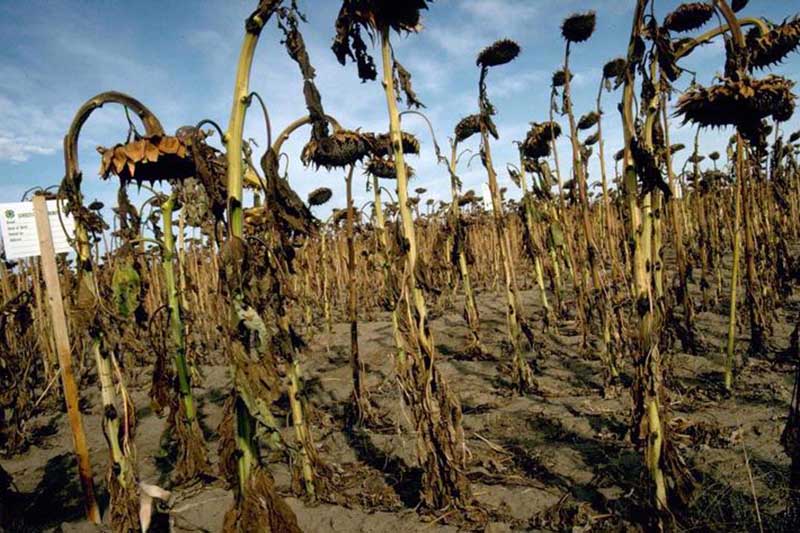
There’s no effective fungicide available for treating these diseases, so the best thing to do is practice crop rotation, select resistant cultivars, avoid overly damp conditions, and ensure adequate airflow between plants.
Rhizopus Head Rot
The first signs of this infection, caused by the fungi Rhizopus arrhizus, R. stolonifer, and R. microsporus, are black spots on the backs of your sunflower heads.
Once these spots develop, it’s only a matter of time before the entire head shrivels and fills with spores can easily spread to surrounding plants in windy conditions.
While there are no effective control measures available, keeping sunflower head moth and bud moth populations under control can help to prevent the spread of this disease. The moth damage tends to make plants more susceptible to Rhizopus Head Rot.
Rust
Various types of fungal rust infections can plague sunflowers, including yellow rust (caused by Coleosporium helianthi), white rust (caused by Albugo tragopogonis), and red rust (caused by Puccinia helianthi).
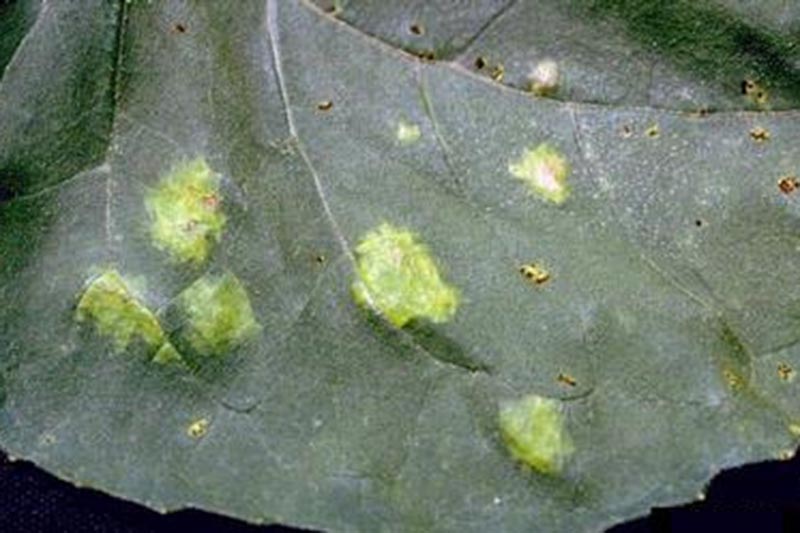
Depending on the type of rust, these cause orange, yellow, or whitish spots to develop on leaves and sometimes even the stems.
Use a copper-based fungicide to treat rust, and try to avoid it in the first place by planting resistant cultivars, keeping leaves dry, and disinfecting all your gardening tools between each use and between plants to prevent spread.
White Mold
Also known as Sclerotinia wilt, white mold is the most devastating sunflower disease out there.
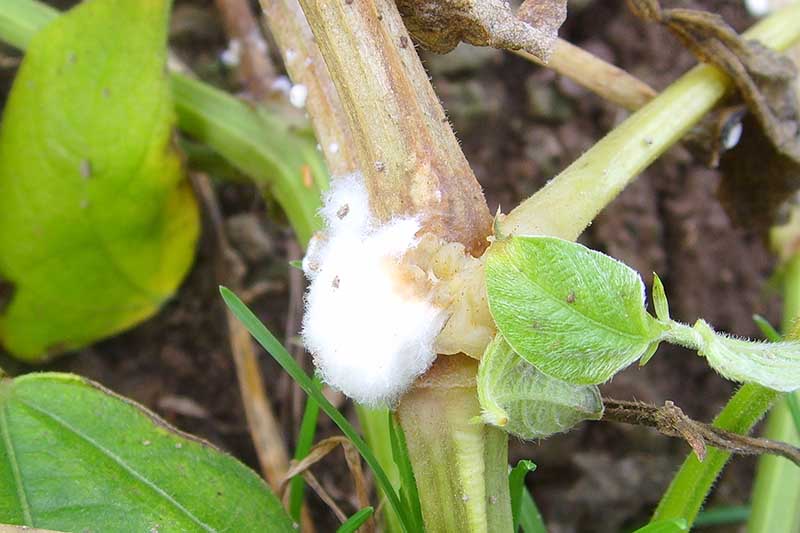
Caused by a fungal pathogen, Sclerotinia sclerotiorum, the disease usually hits the roots first, making the sunflower wilt suddenly. And then – as though that wasn’t enough – a canker develops at the base of the plant and eventually takes over much of the stem.
There’s not much you can do once white mold hits your sunflower patch, except pull and destroy affected plants and hope that the disease doesn’t spread too much.
Next season, plant a non-host, such as corn or another grain, in the area and avoid giving sunflowers a home there again for four years.
Harvesting Sunflower Seeds
Harvest the seeds after most of the flower petals have died and dropped off. Then, cut off the seed heads and about two inches of stem.
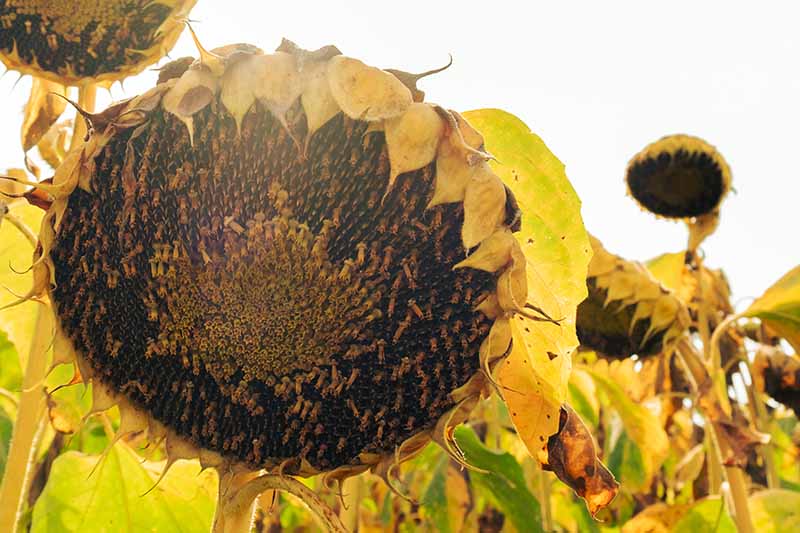
Hang the heads to dry by their stems in a well-ventilated area. Once they are completely dry, rub the flower heads together to loosen them, and the seeds should be easy to extract.
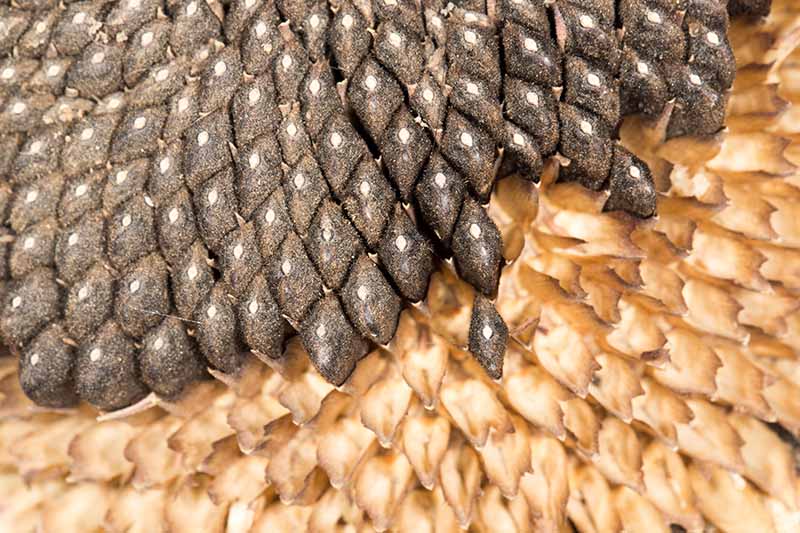
One way to prepare the seeds for eating is to soak them in salty water overnight, drain them, and spread them on a baking sheet to roast for three hours at 200°F.
Yum!
Read more about harvesting sunflower seeds here.
Preserving
To save the seeds for planting next summer, store dried (not roasted) seeds in a brown paper bag. They’ll remain viable for up to seven years!
If you plan to eat most of your seeds, here are a few important points to remember:
- Raw, unshelled seeds can last in the pantry for 2-3 months, or in the fridge or freezer for up to one year.
- Roasted, shelled seeds last for 3-4 months in the pantry, and up to a year in the fridge or freezer.
- Roasted, unshelled seeds last for 4-5 months in the pantry, and for a year in the fridge or freezer.
Recipes and Cooking Ideas
Sunflower seeds aren’t just good for snacks!
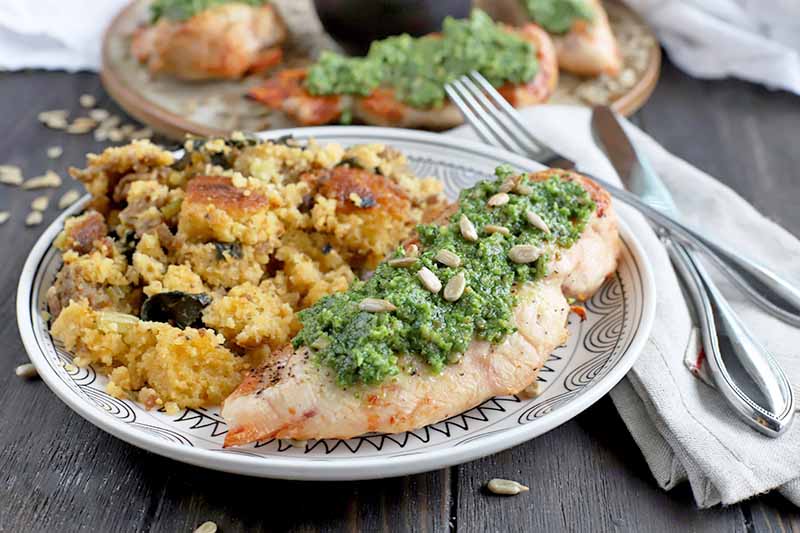
They make an incredible pesto, like you’ll find in this spinach and sunflower seed pesto grilled chicken recipe from our sister site, Foodal.
You can also use the seeds to make a healthier breading for fried chicken, as in this Foodal recipe.

Seriously, how delicious do those chicken fingers look?
The tasty seeds are filled with iron, protein, vitamin E, fiber, and zinc, so they’re nutritious any way you choose to enjoy them.
Quick Reference Growing Guide
| Plant Type: | Annual | Flower / Foliage Color: | Usually yellow, can be red; green |
| Native to: | North America | Tolerance: | Light frost |
| Hardiness (USDA Zone): | 2-11 | Soil Type: | Organically-rich, loose |
| Bloom Time / Season: | Spring, summer, early fall | Soil pH: | 6.0-7.5 |
| Exposure: | Full sun | Soil Drainage: | Well-draining |
| Spacing: | 2-12 inches, depending on variety | Attracts: | Bees, beneficial pollinators, birds |
| Planting Depth: | 1 inch (seeds) | Companion Planting: | Squash, tomatoes, lavender |
| Height: | 1-12 feet | Avoid Planting With: | Potatoes |
| Spread: | 3-6 feet | Family: | Asteraceae |
| Water Needs: | Low to moderate | Genus: | Helianthus |
| Maintenance: | Low | Species: | annuus |
| Common Pests: | Cutworms, grasshoppers, headclipping weevils, sunflower beetles | Common Disease: | Alternaria blight, phoma black stem, phomopsis stem canker, rhizopus head rot, rust, white mold |
A Sun Worshipper to Turn Every Head
Whether you like to gaze at their beauty or eat their delicious seeds, sunflowers are a treat to grow. If you have a red house like I do, they’re pretty much a yearly must-have for the front flower beds.
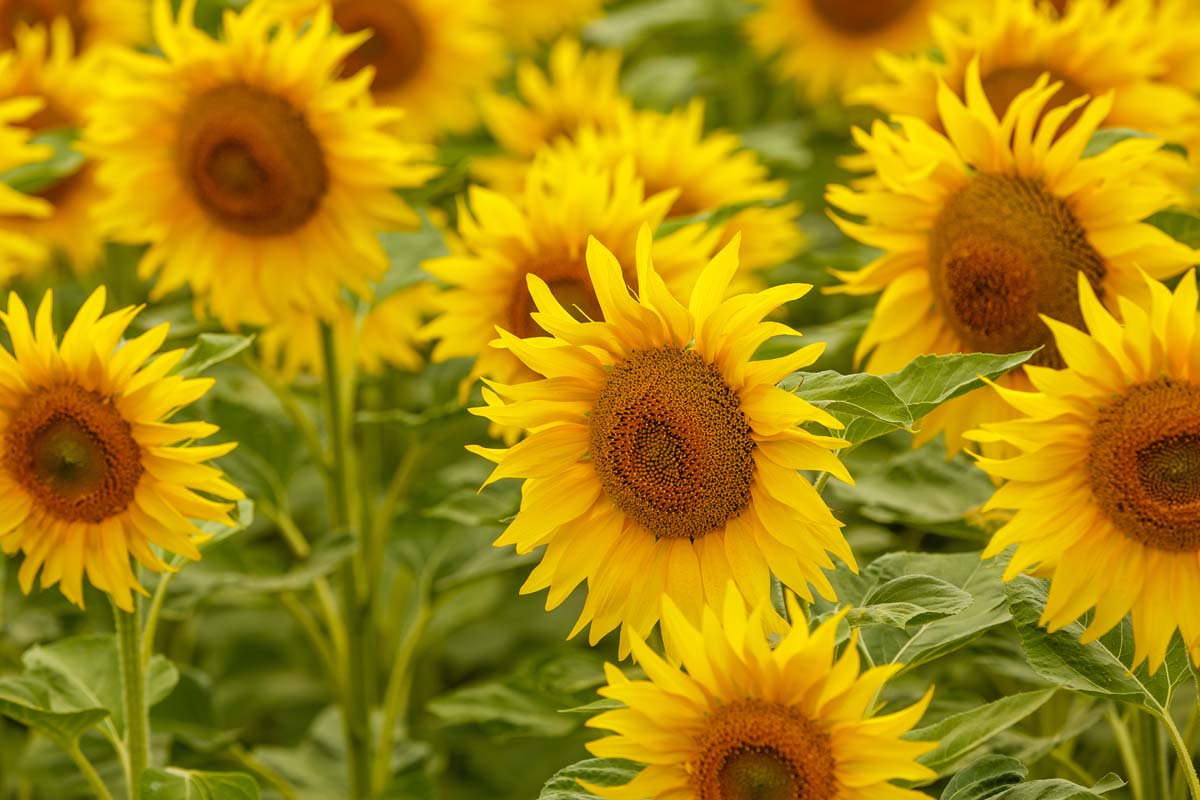
Have you ever grown sunflowers? What was your favorite part about the process? Let us know in the comments below and feel free to share your pictures!
And for more information about growing sunflowers in your garden, check out these articles next:
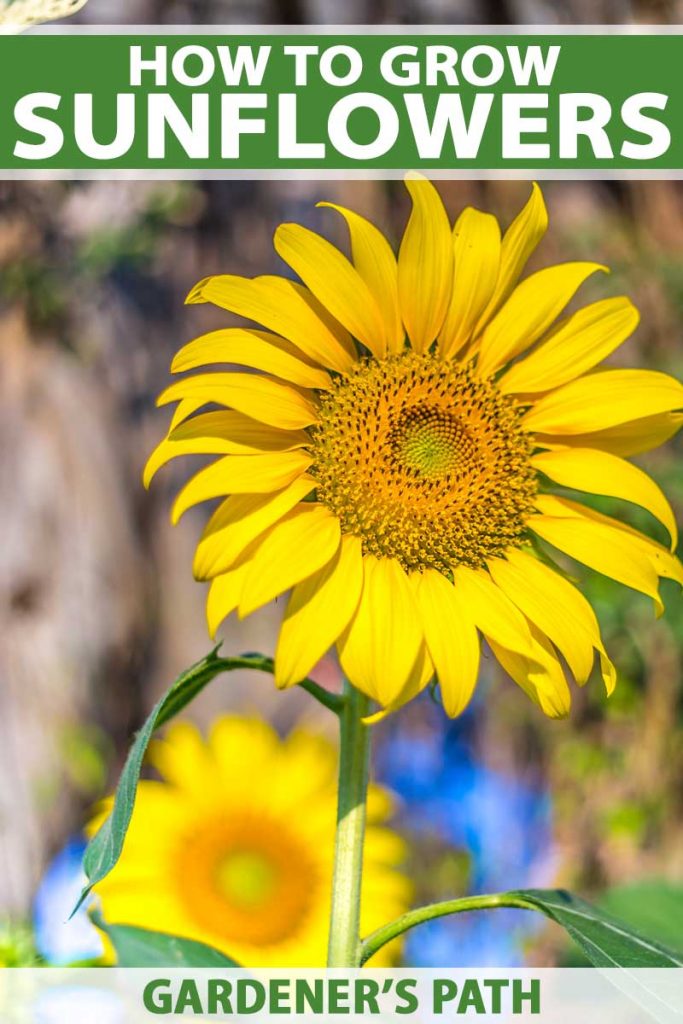
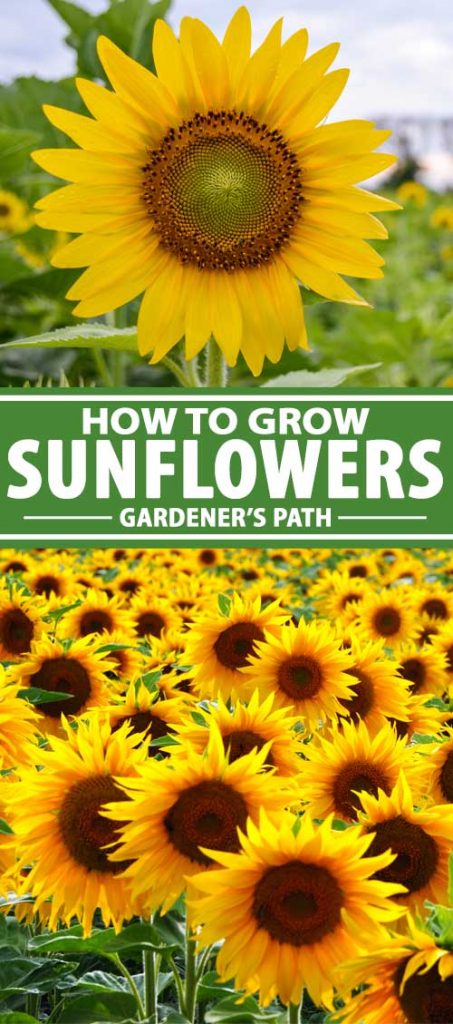
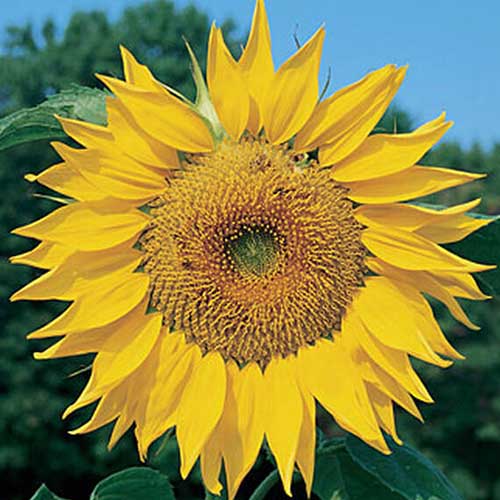
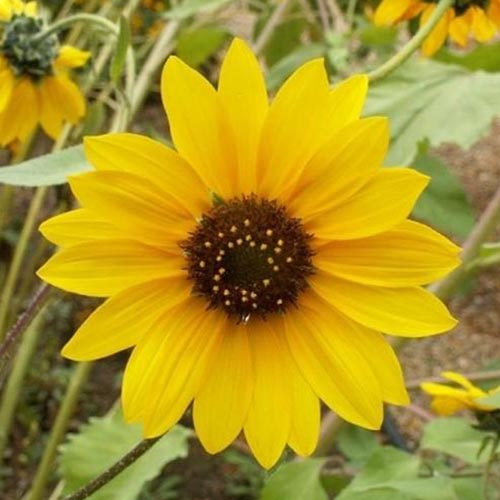
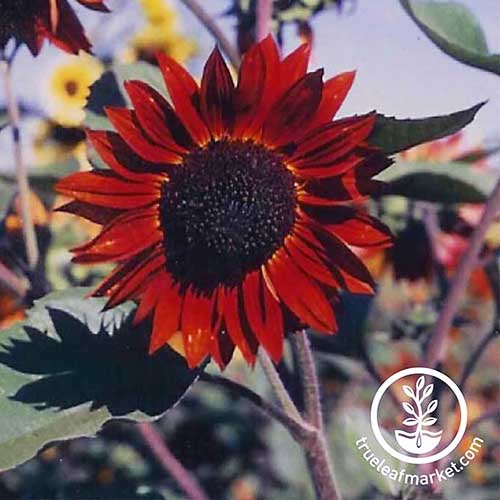
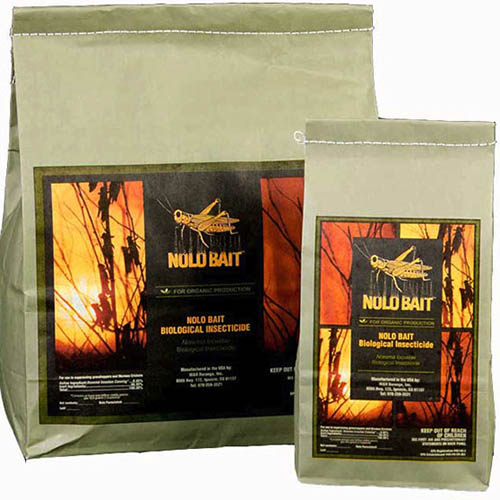
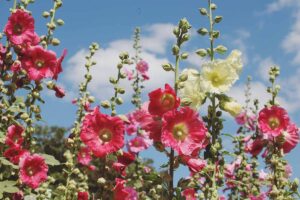
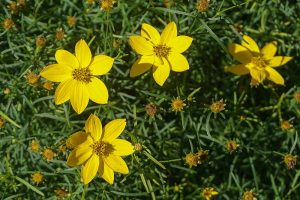
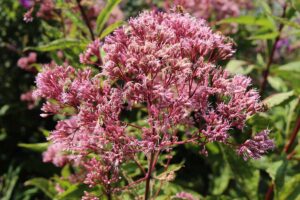
thank you for the great information.
Thank you so much for reading!
I am from Dublin in Ireland. Amazing amount of information and so helpful also. I planted two flowers last year, which worked out well and from their seeds I wanted to grow a lot more this year.
Thank you,
Vincent
Thank you for reading, Vincent! Ah, Ireland — I would love to visit one day. Happy growing!
I started my sunflower seeds in pots then put them into the soil in my garden whilst very young , less than 10cm I’d say and they grew well up until the last two weeks when I’ve noticed black spots on them in my front garden but the back garden ones are fine. I grew them last year no problem so I don’t know why these spots have appeared on about half of them. Can anybody help with what it might be and what to do please?
Eileen, I was able to retrieve these photos and we’ll be in touch with a response ASAP. Apologies for the technical difficulties!
My location is Leeds and my sunflowers leaves are covered in in black dots I spotted ants on them and the ones in back garden have now got little orange things under leaves could this be aphids ?